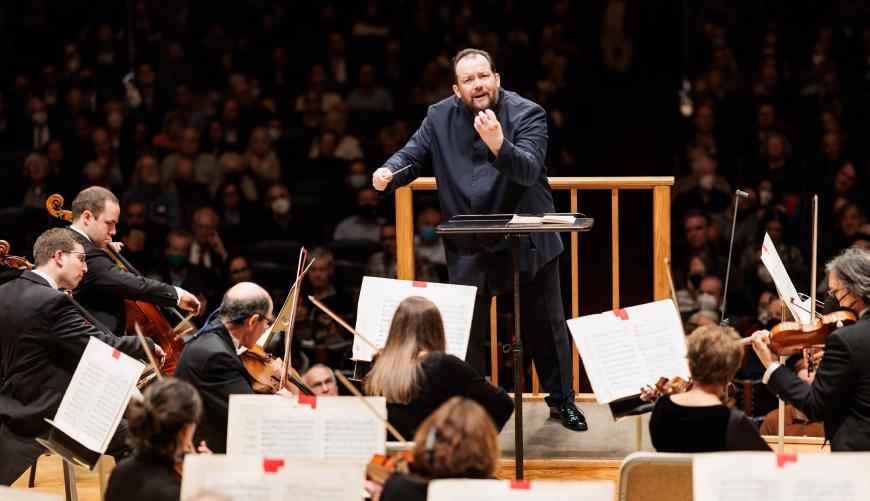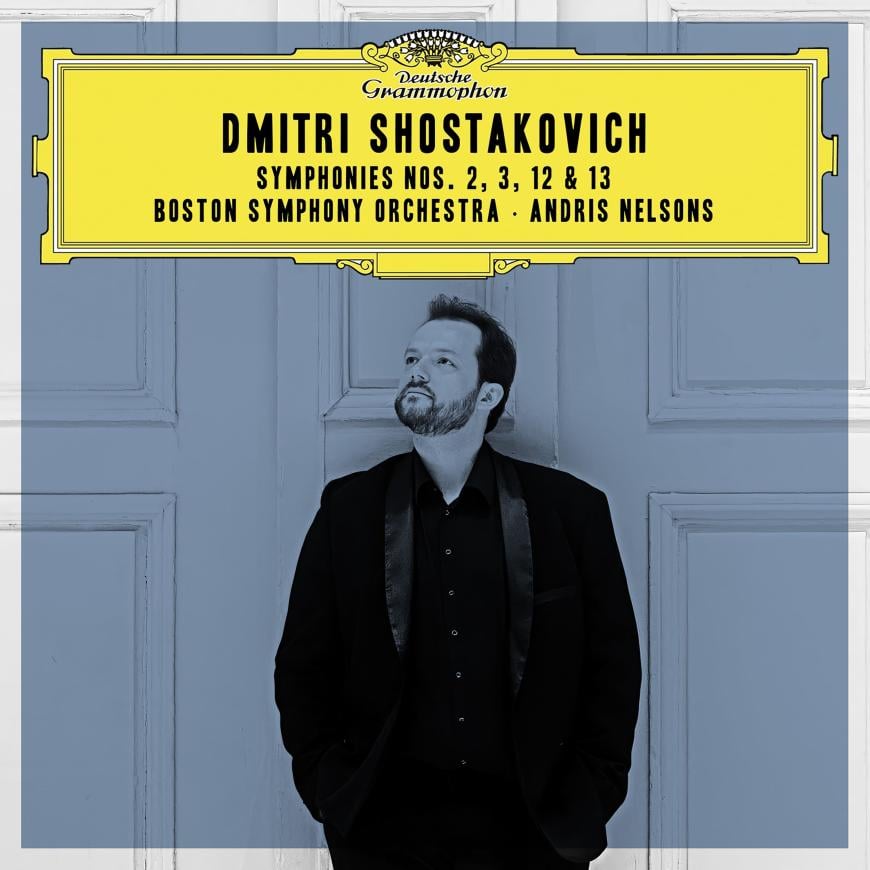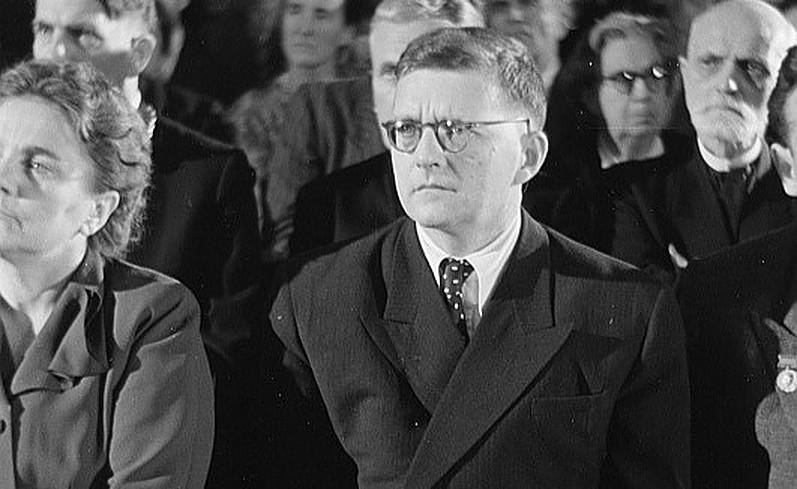
Some recorded symphonic cycles come at us in one fell swoop — an instant boxed set. Others take their time, one or two pieces per shot over years. Andris Nelsons and the Boston Symphony Orchestra’s survey of Dmitri Shostakovich’s 15 symphonies on Deutsche Grammophon belongs in the latter category, although the pacing was not entirely their idea. The COVID shutdown delayed the progress of the cycle by at least a couple of years, but with the recording of the 13th Symphony in May 2023, the set is at last complete.
Rather than parcel out the remaining four installments piecemeal, DG has put them all out at once — a three-CD set containing the Symphonies Nos. 2, 3, 12, and 13. The contrasts in this uniquely-patched-together collection are startling, for it sets two early symphonies from Shostakovich’s wide-eyed avant-garde youth against two more from his disillusioned 1950s. All are political symphonies, however divergent they are in where they seem to stand. Three of the symphonies use a chorus, which none of the other 12 do. None in this set are particularly well known, although Nos. 2 and 13 are gaining in visibility.

In the Symphony No. 2 — subtitled “To October” to commemorate the Bolshevik Revolution — the 21-year-old Shostakovich sounds like a wild man on the loose, writing nebulous chaos music that explodes into a riotous 13-part fugue before ending with a rousing choral finale that seems to genuinely celebrate the triumph of the proletariat without irony. With the belated 21st-century rediscovery of this piece’s futuristic bent by conductors like Esa-Pekka Salonen, this symphony may be catching on at last.
Nelsons and the BSO did a bang-up job with the work at Tanglewood in 2019, and this rendition in Boston’s Symphony Hall from later that year has much the same barely controlled fervor, with brisk, sharp tempos and a sullen darkness before the factory whistle (which sounds like a foghorn) kickstarts the finale. The Tanglewood Festival Chorus is well coached in Russian and sounds quite youthful, if not always together, and the ensemble’s final shout has conviction.
The Symphony No. 3 (“The First Of May”) has many of the same motivations and working parts of No. 2; they’re both single-movement structures celebrating the revolution, with short celebratory choral finales following episodes of orchestral turmoil. The differences are that No. 3 is nearly twice as long as No. 2, is tamer harmonically, and is driven by the galloping Shostakovich signatures to come in future works. Here, the rhetoric often takes too long to get to the point. It seems even longer when taken at some of Nelsons’s broader tempos, although the brilliant BSO brass do themselves proud.
Then there’s the Symphony No. 12 (“The Year 1917”), which even Shostakovich found difficult to defend. It was 1961, the year after the composer was pressured into joining the Soviet Communist Party, and he felt obligated to celebrate the revolution once again. But this time, Shostakovich’s apparent eagerness to embrace the regime in his 20s has been replaced by the feeling of being coerced to write something uplifting.

While the battle music of the first movement is pretty exciting, the bluntly hollow finale — which has a laugher of a subtitle, “The Dawn of Humanity” — is the low point of all of his symphonies. Some conductors have been able to make something out of this — Yevgeny Mravinsky and Vasily Petrenko have been the most convincing — but the lack of urgency in Nelsons’s pacing doesn’t help the piece’s cause, and his slow, dogged slosh through “The Dawn of Humanity” pays special heed to the dissonances. Maybe that was the point?
In the Symphony No. 13 (“Babi Yar”) the following year, Shostakovich turned on the regime and wrote from deep down in his soul, setting Yevgeny Yevtushenko’s poem on the Nazi massacre of Jews at the Babi Yar ravine in Ukraine and four other regime-defying poems. The score is so emotionally and musically direct — forceful, brooding, at times sarcastic, and ultimately gentle — that it’s almost conductor-proof; there are hardly any truly bad recordings of this choral symphony.
Nelsons responds wholeheartedly this time. His generally slow pacing enhances and embraces the gloom. The opening is powerful enough, the BSO brass snarl in the second movement, and from the third movement to the end, Nelsons digs in deeply, with impressively ominous transitions, a mighty climax in the third movement, and long, lingering statements of the fluttery flute song in the finale.
Baritone Matthias Goerne, a rather light-timbred choice in a part that usually works best with bassos, sounds wavery and a bit worn in the “Babi Yar” movement, but his tone stabilizes as the long symphony goes on, building to a commanding presence in the fourth movement (his contributions might have been taken from different live performances).
So, there is the cycle — one that contains several outstanding performances (particularly Nos. 2, 4, 8, 11, and 13) and some middling ones. All are brilliantly played by the Bostonians and splendidly recorded, taking advantage of the famously resonant Symphony Hall acoustics. This Shostakovich cycle, the one by Petrenko on Naxos (in which he makes the Royal Liverpool Philharmonic sound like a world-class band), and a dark-horse candidate on Brilliant Classics by the late Rudolf Barshai and the WDR Symphony Cologne are the most recommendable ones of this century so far.



